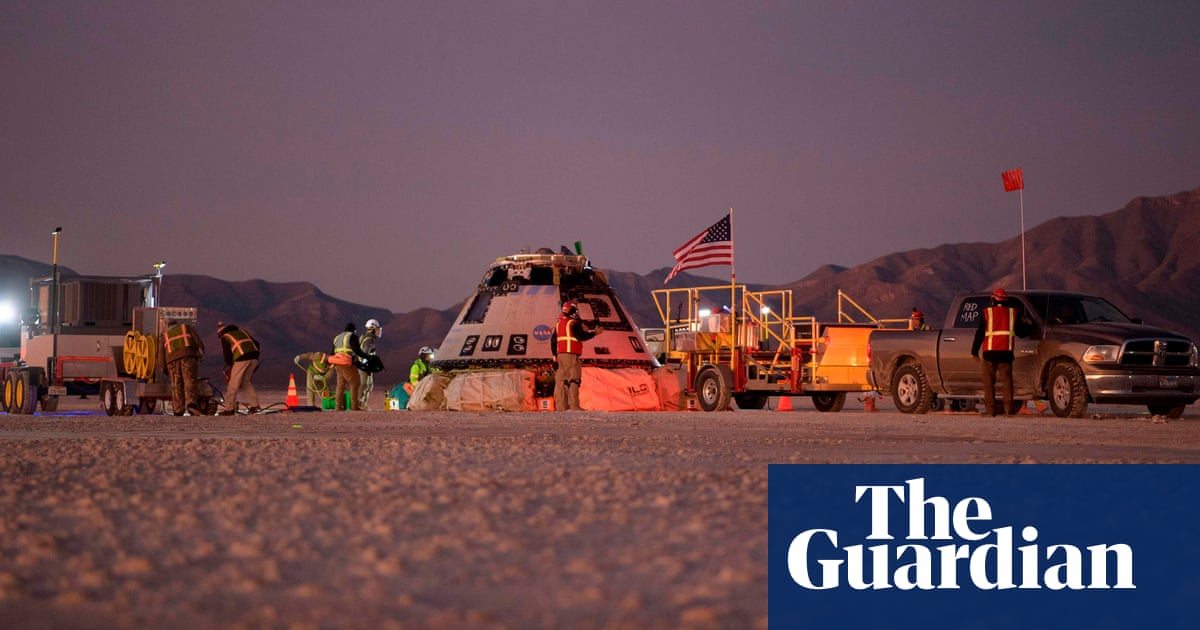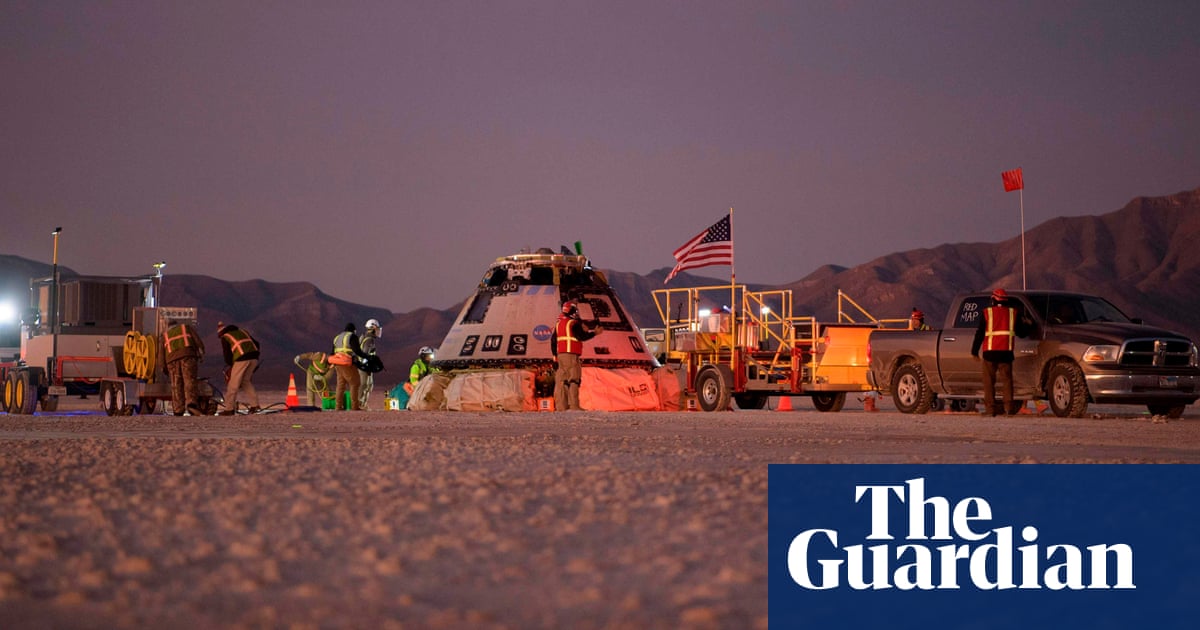Boeings Starliner capsule lands safely in New Mexico after failed mission
Aborted flight threatens to derail the companys efforts to launch astronauts on behalf of Nasa next year

Boeing safely landed its crew capsule in the New Mexico desert Sunday after an aborted flight to the international space station that threatened to derail the companys effort to launch astronauts on behalf of Nasa next year.
The Starliner un-manned spacecraft descended into the US armys White Sands Missile Range in the predawn darkness, ending a two-day demonstration that should have lasted more than a week.
All three main parachutes popped open and airbags also inflated around the spacecraft to ease the impact.
Congratulations, Starliner, said an operator at Mission Control, calling it a successful touchdown.
A test dummy named Rosie the Rocketeer, after Rosie the Riveter of World War II legend, rode in the commanders seat. Also returning were holiday presents, clothes and food that should have been delivered to the space station crew.
After seeing this first test flight cut short and the space station docking canceled because of an improperly set clock on the capsule, Boeing employees appeared relieved to get the Starliner back to Earth in one piece.
Recovery teams cheered as they watched the capsule drift down through the air and make a bulls-eye landing. The touchdown was broadcast live on Nasa TV; infrared cameras painted the descending capsule in a ghostly white.
The astronauts assigned to the first Starliner crew, two from Nasa and one from Boeing, were part of the welcoming committee in the bitter cold. Top Nasa and Boeing officials poured into Mission Control in Houston, congratulating everyone on the landing.
The capsules first trip to space began with a smooth rocket ride from Cape Canaveral on Friday. But barely a half hour into the flight, it failed to fire its thrusters to give chase to the space station and ended up in the wrong orbit.
The problem was with the Starliners internal clock: it did not sync up with the Atlas V rocket, throwing off the capsules timing. The capsule burned so much fuel trying to orient itself in orbit that there wasnt enough left for a space station rendezvous.
Flight controllers tried to correct the problem, but between the spacecrafts position and a gap in communications, their signals did not get through. They later managed to reset the clock. Boeing is still trying to figure out how the timing error occurred. The mission lasted nearly 50 hours and included 33 orbits around the Earth.
Nasa is uncertain whether it will demand another test flight from Boeing to include a space station visit before putting its astronauts on board.
Boeing had been shooting for its first astronaut mission in the first half of 2020. This capsule is supposed to be recycled for the second flight with crew. Despite its own setbacks, commercial rival SpaceX remains in the lead in Nasas commercial crew program.
SpaceXs Dragon crew capsule successfully completed its first orbital demo last March. While the flight to the space station went well, the capsule exploded a month later on a test stand at Cape Canaveral.
If a launch abort test goes well next month, SpaceX could start launching Nasa astronauts by spring and end a nearly nine-year gap in flying people from Cape Canaveral.
As its space shuttle program was winding down, Nasa looked to private industry to take over cargo and crew deliveries to the space station. The goal was to launch Nasa astronauts by 2017.
Because of delays, Nasa is looking to buy another two seats on Russian rockets in 2020 and 2021 to guarantee a continuing US presence on the space station.
